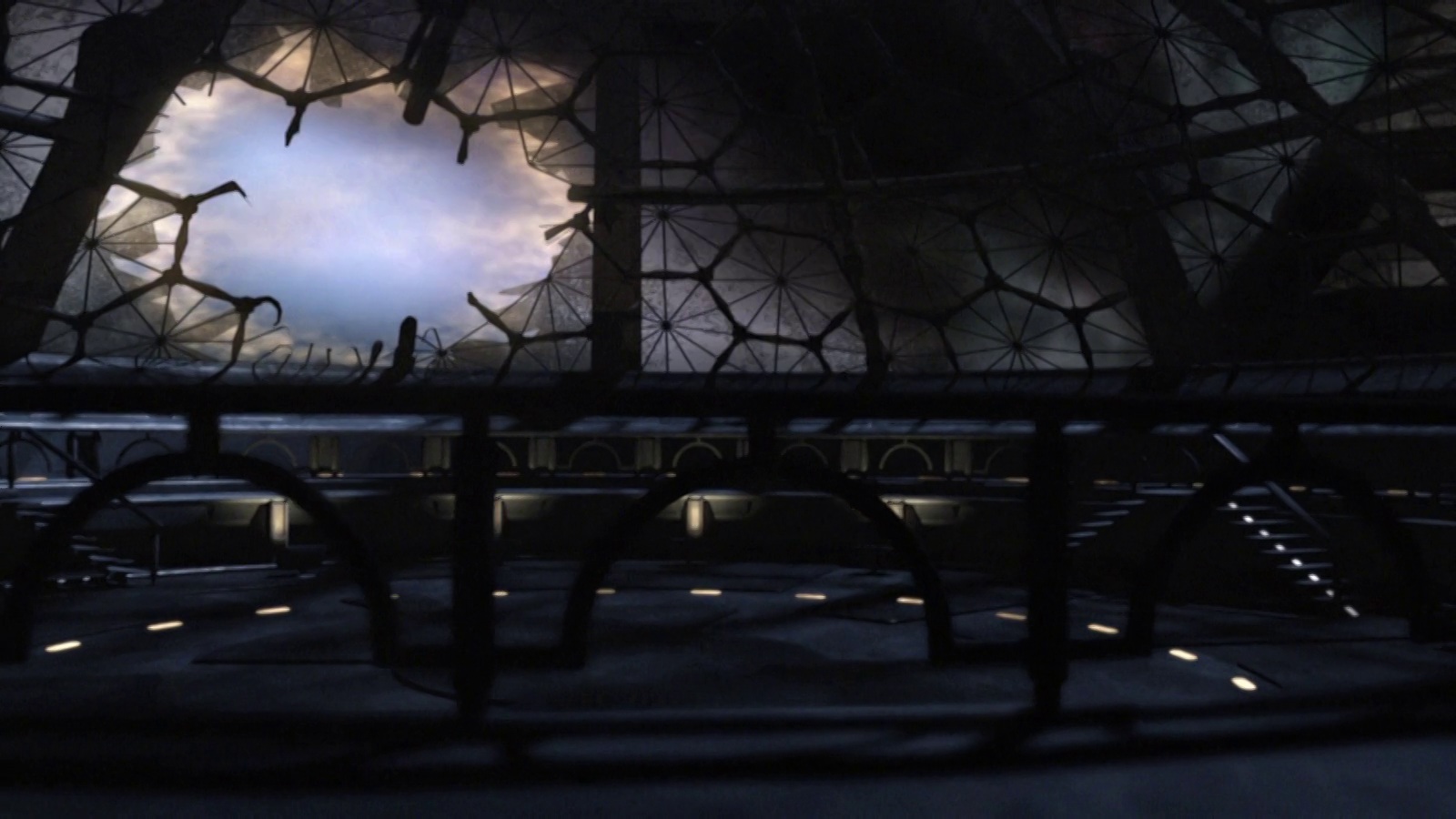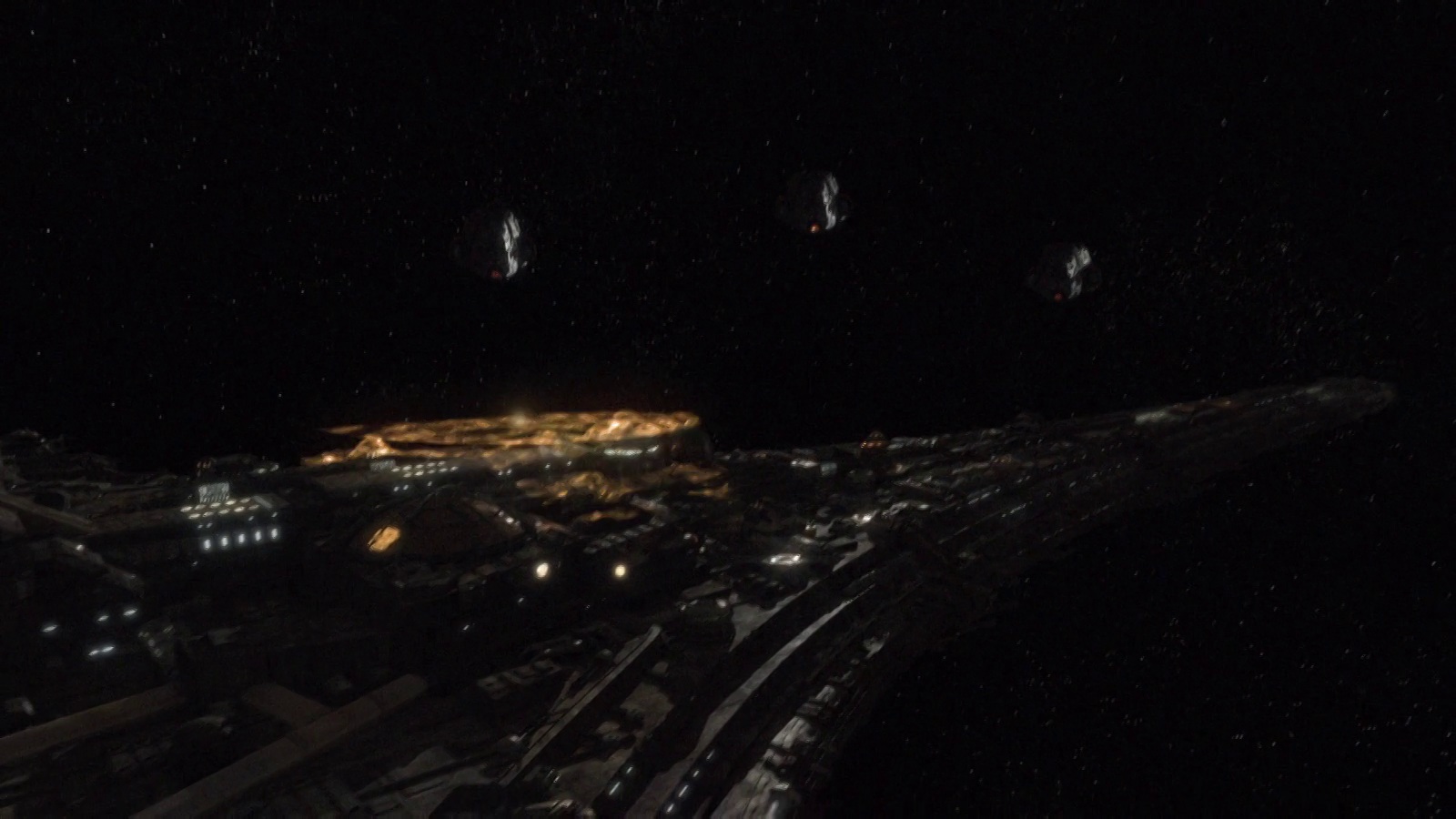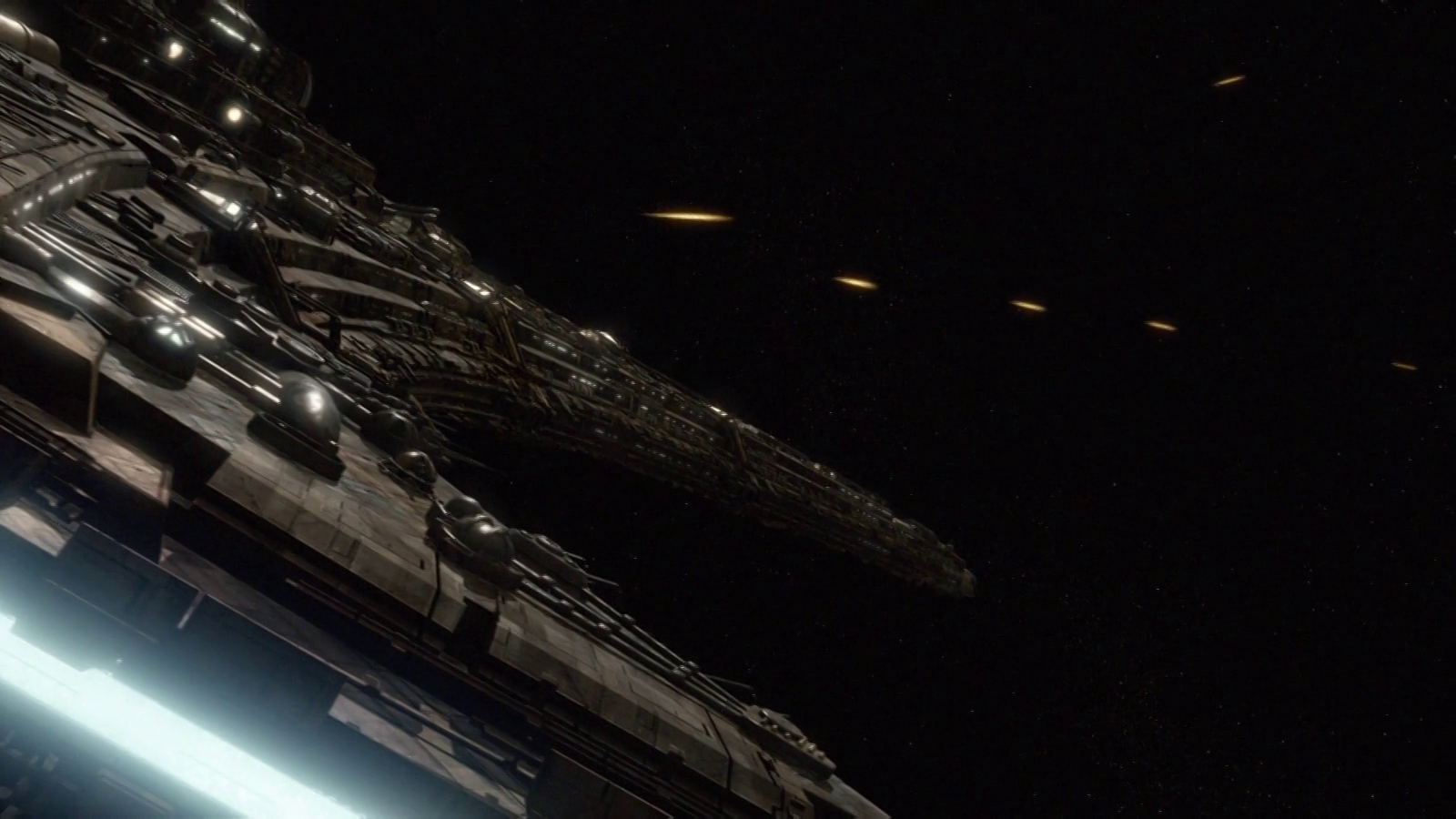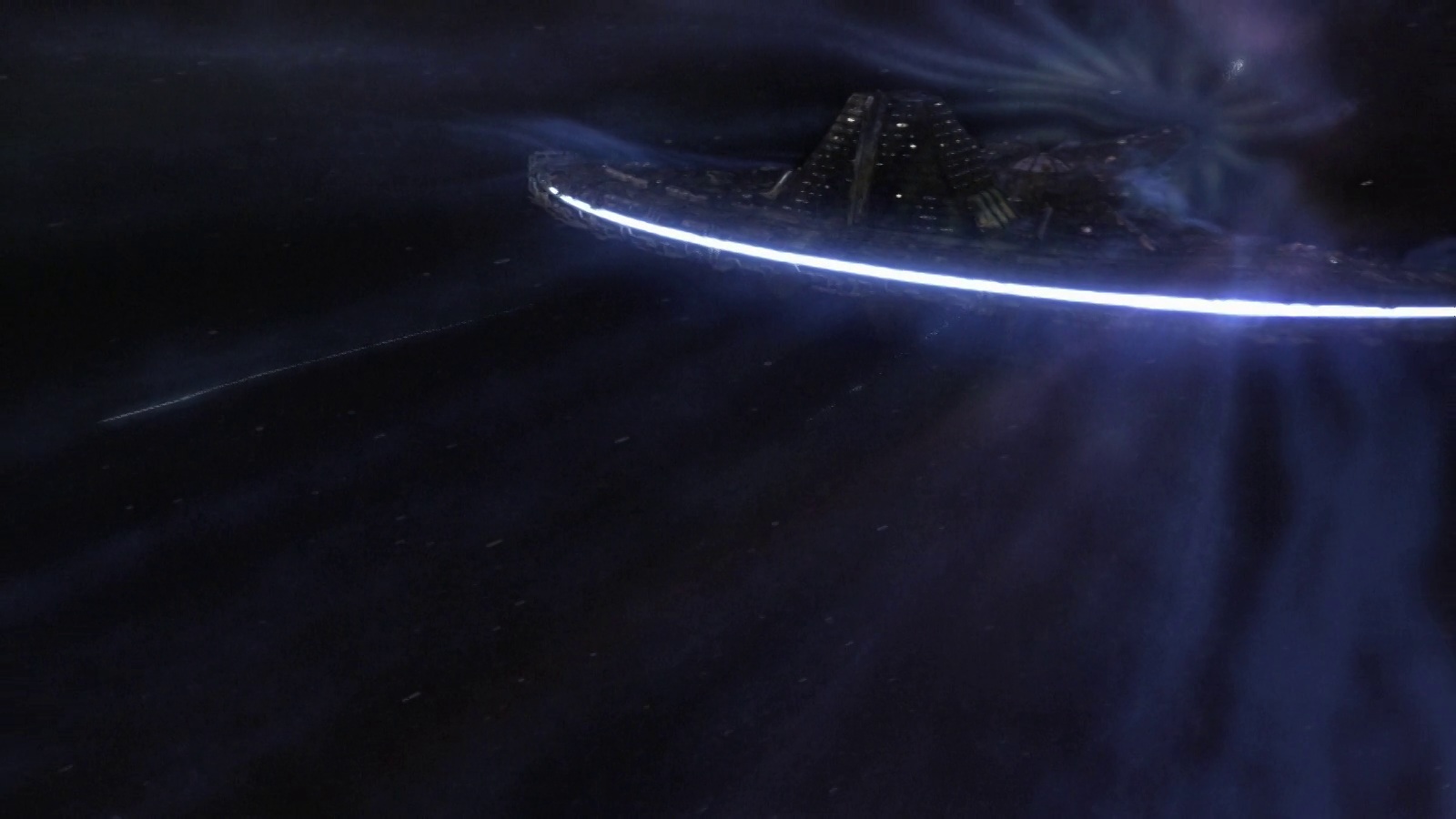Destiny
From STNE Wiki
STNE is a Strategy and Role Play Game. You can play here.
| Contents | STNE | Colonies | Buildings | Goods | Items | NPC | Ships | Stellar Cartography | Research | Trade | Combat | Settler | Alliances | Index |
|---|
| |
| |
| |
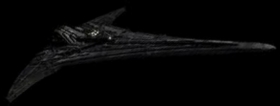
| |
| Destiny | |
|---|---|
| Classification | |
| Type: | Unknown |
| Category: | NPC Ship |
| Class: | Unknown |
| General data | |
| Slots: | Unknown |
| Crew (Min/Max): | Unknown |
| Energy/Flight data | |
| EPS storage: | Unknown |
| Reserve Battery: | Unknown |
| Reactor yield: | Unknown |
| Solar panels: | Unknown |
| Core Capacity: | Unknown |
| Energy travel cost: | Unknown |
| Flight range: | Unknown |
| Logistical data | |
| LRS range: | Unknown |
| Cargo bay: | Unknown |
| Beam capacity: | Unknown |
| Integrity data | |
| Hull strength: | 2200 |
| Armor strength: | Unknown |
| Shield strength: | Unknown |
| Deflectors: | Unknown |
| Weapons/Tactical data | |
| Phasers: | Unknown |
| Disruptors: | Unknown |
| Torpedo tubes: | Unknown |
| Torpedo types: | Unknown |
| Torpedo capacity: | Unknown |
| Torpedo evasion: | Unknown |
Destiny is a ship in the Ancient fleet, constructed and launched over 50 million years ago from Earth. The Ancients launched several automated ships prior to Destiny, each with the purpose of constructing and seeding Stargates throughout the numerous galaxies they crossed, with Destiny itself planned to follow in their path to explore those planets.
After beginning this process, the Ancients initially planned to wait until the ship reached a sufficient distance from Earth to board it. However, because of other endeavors, such as Ascension, they never followed through on the plan. Because of this, Destiny has continued on a pre-programmed path on its journey throughout the stars, alone, for millions of years. With the arrival of a Tau'ri expedition in 2009, Destiny has a new crew.
Specifications
Destiny itself is relatively flat and triangular in shape. The left and right sides are markedly concave, while the aft portion of the ship is convexly rounded. The ship is very long and becomes more narrow towards the bow. The surface of the ship is covered with layers of textural elements, including a large number of triple-barreled weapon turrets and anti-fighter emplacements.
Some doors in Destiny's interior are accompanied by a small control panel, much like Atlantis has panels containing Control crystals that control some of the doors there. The small blue light on a door panel indicates it is on automatic. Beneath that, the red and amber lights indicate whether the door is locked or unlocked, respectively. Below the large round button, along the bottom of the panel, are eight small buttons with ancient writing on them that allow for manual overrides or door code changes.
Destiny is capable of faster than light travel (FTL) but not by means of hyperdrive engines. The FTL drive spans the full rear of the ship.
It predates the Ancient Technology Activation gene security feature featured in the outposts and in Lantean technology, instead having an incredibly complex master code based on an advanced Ancient DNA sequence. This access code is required for access to systems such as navigation and advanced power management, but not for basic weapon and shield control.
Technology
The Destiny has a great deal of advanced technology at her disposal, ranging from the Stargate and Shuttles, to Energy weapons, the Faster-Than-Light engine, to the Solar Power Collectors and the all-important Energy shields.
Power generation
Destiny reactors are fueled by absorbing and storing stellar material through a series of ram scoops on the underside of each wing. To accomplish this, Destiny dives into the photosphere of a star, absorbing material during its fly-through. The shields allow matter to pass through for the ram scoops to collect while keeping the ship completely protected from the intense conditions. However, large, hot stars (such as Blue giants) are more than the Destinys's protective capabilities can fully handle. Destiny can still use these stars to recharge though not without incurring some degree of damage and putting great strain on its shields. The ship will perform this recharging process automatically whenever power levels drop below a certain point. The ram scoops will also apparently engage at any available opportunity, such as when Destiny followed a seed ship through a star to destroy a group of attacking berzerker drones.
During its recharge cycle, Destiny has a theoretically limitless amount of power, since power is replenished almost as quickly as it can be expended. The International Oversight Advisory devised a plan to use this recharge cycle to dial Earth with the Stargate. However, this plan is fraught with danger, and the only two attempts thus far have ended in failure (though the first was sabotaged, it likely would not have succeeded anyway). Due to the age of the ship, Destiny can only reach approximately 40% of its originally-designed power capacity when recharging, although so far the only noticeable result of this power shortage is the ship's inability to dial a nine-chevron address, with other functions such as life support and weapons operating relatively normally (Albeit most likely operating at a lesser efficiency than they would have done when the ship was completely new).
Shields
Destiny possesses a yellow energy shielding system which may be localized to retain the atmosphere in damaged parts of the ships. However, shield strength is dependent on power levels and the number of localized shields currently active. Destiny's shields are capable of resisting the intense heat and turbulence of a stars corona, using only reserve power, to the point where neither is at all noticeable to anyone inside. They were rapidly depleted by energy weapons during a battle with the Nakai, though this is most likely due to a power transfer problem rather than a less advanced design as damage to defensive systems is very significant and most of the ship is not operational. Both shields and weapons might get their power from the same source at the moment due to damaged relays, and so the ship may have automatically diverted more power to one and less to the other to keep it balanced to allow both to run at the same time. The shield strength can also be attenuated to allow things to pass through them.
After further progression of Tau'ri repairs to the ship, according to a simulation performed by the ship's computers, its shields are now able to resist fire for over 44 minutes from nine Nakai motherships. It is likely that even this does not represent the full capabilities of the ship when it was first launched, as it still suffers from extensive damage.
Destiny's shields are capable of protecting the ship while flying through an O-class star, although the interior of the ship will get past 300 C in the process. This does not seem to damage the ship's systems, but the crew were forced to temporarily evacuate the ship to ensure that they were not killed by the heat, the ship being temporarily manned by a three-person crew using the Ancient space suits.
Destiny's shields constantly change frequencies in the hope of matching enemy fire; the closer the frequency, the less damage Destiny takes. While this makes the shields less effective against specific types of energy weapons, it provides better general protection overall. However, Destiny's programming can be overwridden to allow the shields to be set to a specific frequency (or close to it) to provide better protection against that specific type of energy weapon. Unfortunately, doing so leaves the ship vulnerable to all other types of attacks.
Since the Tau'ri crew came on board, Destiny has only taken hits from what appears to be low to mid-level energy weapons, which has put its shield under strain to the point of failure on numerous occassions (the ship is very old and damaged, however). Although speculative, extremely advanced and powerful energy weapons, such as the Asgard Plasma Beams, would probably not only deplete Destiny's shield, but penetrate it and tear the ship apart.
Weapons
Destiny possesses a vast array of yellow energy weapons, which is comprised of a large number of double-barreled weapon turrets located all along the ship's hull. These turrets appear to be anti-fighter weapons, capable of rapid-fire and tracking to destroy smaller ships. Given enough time and under the right circumstances, they are capable of greatly diminishing Destiny's power reserves. The weapons draw power from the shields while active, diminishing defence in favor of offense. However this could be because most of the ship is not operational, suggesting that it might not be a power problem but a power transfer problem.
Destiny is also equipped with four larger energy cannons located on the underside of the hull. Capable of significantly stronger blasts than her standard weapons, these cannons are designed for use against larger vessels such as motherships. Like the standard weapons, Destiny's energy cannons run the risk of depleting the ship's power reserves, and can even cause the weapons systems to overload if used in excess, which can destroy the ship. This is most likely due to the damage the ship has taken over its journey. Destiny's main weapon appears to be capable of destroying a berzerker drone command ship with only a few shots, although a Nakai ship's shields can resist more firepower.
Faster-Than-Light engine
Destiny's Faster-Than-Light engine, or FTL engine, is capable of faster-than-light travel without entering hyperspace. An incoming wormhole to the ship's Stargate will trigger the drive to temporarily shut down, enabling the gate to connect. Destiny had sixteen individual FTL engine units, but now only has 15 after a damaged one was removed. The drive can operate normally using only fifteen or perhaps even fewer. So long as shields are enveloping both ships, other ships can jump into FTL while attached to Destiny, but they must be securely attached to the ship- such as via the shuttle docking clamps- or they may be ripped apart by the resulting stresses When entering and exiting FTL, it disrupts the Long-range communication device for a few seconds. Unexpected anomalies, such as the gravitational pull from an Uncharted star, can cause Destiny to drop out of FTL; but the automated navigational systems can adjust the Destiny's course using sublight engines to prevent a collision and get back on course to engage FTL again once clear. The FTL engines must remain active for four hours after a jump and inactive for three hours when they are disengaged. Jumps made earlier than this can cause damage to the engine.
Note: To see RPs related to the destiny NPC see channel 1362
Also See:
